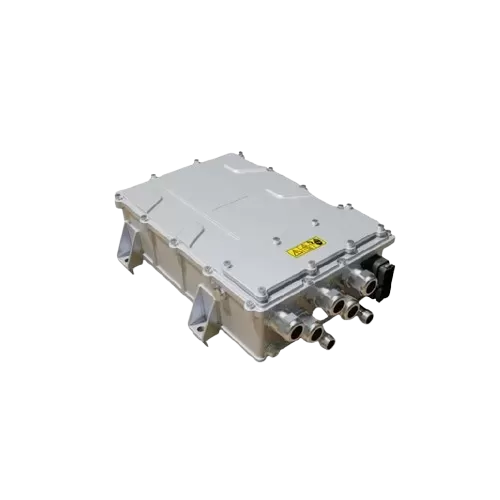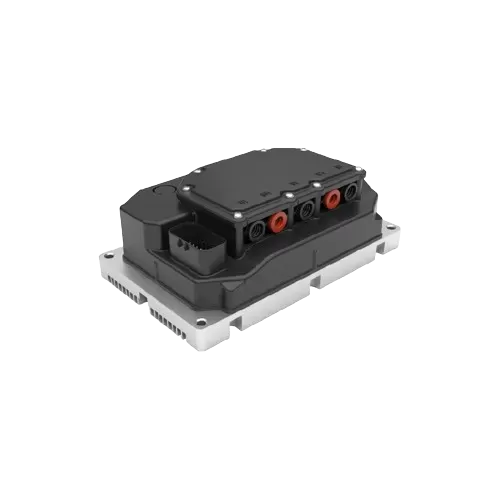As the global automotive industry shifts toward electrification, the role of inverter technology has become increasingly central. While much attention is placed on batteries and motors, the inverter quietly plays a pivotal part in powering the electric revolution. Its function—converting direct current (DC) from the battery into alternating current (AC) for the motor—is essential to the efficiency, performance, and reliability of electric vehicles (EVs).
Understanding the Function of an EV Inverter
To begin with, the inverter is the component that transforms the DC power stored in an EV’s battery into AC power, which is required to drive the electric motor. It does so by rapidly switching semiconductor devices—typically IGBTs, or increasingly, SiC MOSFETs—to create a controlled three-phase AC signal. This process, often using pulse width modulation (PWM), ensures that the motor operates smoothly and efficiently under different driving conditions.
In addition to motor drive, the inverter also supports regenerative braking. In this mode, the electric motor acts as a generator, feeding recovered kinetic energy back into the battery as DC power. This bidirectional power flow is managed precisely by the inverter, helping improve overall energy efficiency and extend driving range.

Design Requirements for EV Inverters
The design of an inverter for EV applications is highly demanding. It must achieve high efficiency to minimize energy losses, maintain compact form factors to reduce space and weight, and ensure reliable thermal performance to operate under harsh conditions.
Modern EV inverters are expected to handle high power densities while managing switching frequencies in the tens of kilohertz. Additionally, electromagnetic compatibility (EMC), fault tolerance, and safety compliance are all vital to ensure both user protection and system reliability. The inverter’s performance is directly linked to the driving experience—controlling torque, acceleration, and responsiveness.
Advanced Control and System Integration
Beyond power conversion, inverters are also responsible for implementing advanced control strategies. Using algorithms like Field-Oriented Control (FOC) or Space Vector PWM, they manage the motor’s torque and speed with high precision. This fine control enables smoother driving, better traction, and energy-efficient operation.
Furthermore, modern EVs feature deeply integrated electronic control systems. The inverter communicates with the vehicle’s battery management system (BMS) and motor control unit (MCU), adjusting output in real-time based on power demand, battery status, and vehicle conditions. As EV architectures evolve, integration between the inverter and other drivetrain components becomes a key strategy for improving powertrain efficiency and reducing overall vehicle complexity.

The Shift Toward High-Voltage and Wide-Bandgap Technologies
Efficiency remains one of the top concerns for EV buyers and manufacturers alike. To address this, the industry is moving toward high-voltage platforms, such as 800V systems. These allow the same power to be delivered with less current, reducing cable size and inverter mass while enabling faster charging and better thermal performance.
Parallel to this, wide-bandgap semiconductors like silicon carbide (SiC) and gallium nitride (GaN) are transforming inverter design. SiC offers higher switching frequencies and lower losses than traditional silicon, enabling smaller and more efficient power stages. GaN, though still emerging in high-power automotive applications, promises even faster switching and potentially lower cost in the future.
These materials help reduce inverter size, increase power density, and improve overall system efficiency—key benefits in the drive to extend EV range without increasing battery size.
Reducing Cost and Weight Through Integration
Early EVs often used standalone inverters connected to the motor via heavy cable harnesses. Today, there is a strong trend toward integrating the inverter with the electric drive unit (EDU), which includes the motor and reduction gearbox. This integration eliminates external connections, reduces resistance losses, and lowers overall system weight.
By optimizing how components fit together, manufacturers can shrink the powertrain’s footprint, reduce copper usage, and simplify vehicle assembly. These improvements help bring down production costs while enhancing vehicle performance and efficiency.
Overcoming Range and Charging Challenges
One of the key barriers to EV adoption is range anxiety—concerns about how far a car can travel on a single charge and how quickly it can be recharged. Inverter efficiency directly influences both. A more efficient inverter translates into lower energy losses, better use of the battery’s capacity, and shorter charging times.
Instead of relying solely on larger batteries, many manufacturers are focusing on optimizing inverter and drivetrain efficiency to extend range. For instance, a high-performance 800V inverter can deliver more power while reducing copper use and cooling requirements—improving the power-to-weight ratio and lowering system costs.
Conclusion: Inverters Are Powering the EV Future
As EVs become more widespread, the inverter’s role as a central element of the electric drivetrain is clearer than ever. It is not just a converter of energy, but an enabler of performance, efficiency, and intelligent control. Through advancements in materials, integration, and control strategies, inverter technology continues to unlock the full potential of electric vehicles.
Looking to optimize your electric vehicle systems with advanced inverter solutions? GTAKE delivers high-performance motor control technologies tailored for modern EV and hybrid applications. Discover how we can support your journey toward a smarter, more efficient future.
